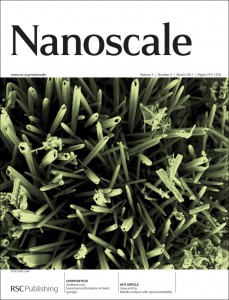 We would like to share with you some of the high impact review articles which have been published in Nanoscale in 2011. From authoritative reviews to personal perspectives and Minireviews of exciting emerging areas, Nanoscale publishes review articles of the highest quality and impact.
We would like to share with you some of the high impact review articles which have been published in Nanoscale in 2011. From authoritative reviews to personal perspectives and Minireviews of exciting emerging areas, Nanoscale publishes review articles of the highest quality and impact.
Read a selection of our high impact Nanoscale review articles today:
Fluorescent silver nanoclusters
Isabel Díez and Robin H. A. Ras
DOI: 10.1039/C1NR00006C
Carbon nanotube wires and cables: Near-term applications and future perspectives
Paul Jarosz, Christopher Schauerman, Jack Alvarenga, Brian Moses, Thomas Mastrangelo, Ryne Raffaelle, Richard Ridgley and Brian Landi
DOI: 10.1039/C1NR10814J
Nanoconfined hydrides for energy storage
Thomas K. Nielsen, Flemming Besenbacher and Torben R. Jensen
DOI: 10.1039/C0NR00725K
Nanoscale three-dimensional single particle tracking
Aurélie Dupont and Don C. Lamb
DOI: 10.1039/C1NR10989H
Liquid-phase exfoliation, functionalization and applications of graphene
Xu Cui, Chenzhen Zhang, Rui Hao and Yanglong Hou
DOI: 10.1039/C1NR10127G
Optical properties of metallic nanoparticles: manipulating light, heat and forces at the nanoscale
Eduardo A. Coronado, Ezequiel R. Encina and Fernando D. Stefani
DOI: 10.1039/C1NR10788G
Controlled assembly of plasmonic colloidal nanoparticle clusters
José M. Romo-Herrera, Ramón A. Alvarez-Puebla and Luis M. Liz-Marzán
DOI: 10.1039/C0NR00804D
Organic-based molecular switches for molecular electronics
Noelia Fuentes, Ana Martín-Lasanta, Luis Álvarez de Cienfuegos, Maria Ribagorda, Andres Parra and Juan M. Cuerva
DOI: 10.1039/C1NR10536A
Metallic surfaces with special wettability
Kesong Liu and Lei Jiang
DOI: 10.1039/C0NR00642D
Nanostructure-based thermoelectric conversion: an insight into the feasibility and sustainability for large-scale deployment
Gautam G. Yadav, Joseph A. Susoreny, Genqiang Zhang, Haoran Yang and Yue Wu
DOI: 10.1039/C1NR10555H
The role of nanomaterials in redox-based supercapacitors for next generation energy storage devices
Xin Zhao, Beatriz Mendoza Sánchez, Peter J. Dobson and Patrick S. Grant
DOI: 10.1039/C0NR00594K
Safer energetic materials by a nanotechnological approach
Benny Siegert, Marc Comet and Denis Spitzer
DOI: 10.1039/C1NR10292C
2D materials: to graphene and beyond
Rubén Mas-Ballesté, Cristina Gómez-Navarro, Julio Gómez-Herrero and Félix Zamora
DOI: 10.1039/C0NR00323A
Cu2ZnSnS4 nanocrystals and graphene quantum dots for photovoltaics
Jun Wang, Xukai Xin and Zhiqun Lin
DOI: 10.1039/C1NR10425J
Building one-dimensional oxide nanostructure arrays on conductive metal substrates for lithium-ion battery anodes
Jian Jiang, Yuanyuan Li, Jinping Liu and Xintang Huang
DOI: 10.1039/C0NR00472C
Emerging fabrication techniques for 3D nano-structuring in plasmonics and single molecule studies
F. De Angelis, C. Liberale, M. L. Coluccio, G. Cojoc and E. Di Fabrizio
DOI: 10.1039/C1NR10124B
TEMPO-oxidized cellulose nanofibers
Akira Isogai, Tsuguyuki Saito and Hayaka Fukuzumi
DOI: 10.1039/C0NR00583E
Lithography, metrology and nanomanufacturing
J. Alexander Liddle and Gregg M. Gallatin
DOI: 10.1039/C1NR10046G
Graphene edges: a review of their fabrication and characterization [http://xlink.rsc.org/?doi=10.1039/C0NR00600A]
Xiaoting Jia, Jessica Campos-Delgado, Mauricio Terrones, Vincent Meunier and Mildred S. Dresselhaus
DOI: 10.1039/C0NR00600A
Supramolecular self-assembly of biopolymers with carbon nanotubes for biomimetic and bio-inspired sensing and actuation
Luhua Lu and Wei Chen
DOI: 10.1039/C1NR10113G
Electrostatics at the nanoscale
David A. Walker, Bartlomiej Kowalczyk, Monica Olvera de la Cruz and Bartosz A. Grzybowski
DOI: 10.1039/C0NR00698J
Tin and germanium monochalcogenide IV–VI semiconductor nanocrystals for use in solar cells
Priscilla D. Antunez, Jannise J. Buckley and Richard L. Brutchey
DOI: 10.1039/C1NR10084J
Molecular strategies to read and write at the nanoscale with far-field optics
Janet Cusido, Stefania Impellizzeri and Françisco M. Raymo
DOI: 10.1039/C0NR00546K
Supramolecular assembly/reassembly processes: molecular motors and dynamers operating at surfaces
Artur Ciesielski and Paolo Samorì
DOI: 10.1039/C0NR00914H
Nanomechanical architecture of semiconductor nanomembranes
Minghuang Huang, Francesca Cavallo, Feng Liu and Max G. Lagally
DOI: 10.1039/C0NR00648C
Multi-scale theoretical investigation of hydrogen storage in covalent organic frameworks
Emmanuel Tylianakis, Emmanouel Klontzas and George E. Froudakis
DOI: 10.1039/C0NR00505C
Small-sized silicon nanoparticles: new nanolights and nanocatalysts
Zhenhui Kang, Yang Liu and Shuit-Tong Lee
DOI: 10.1039/C0NR00559B
Spider silk as a load bearing biomaterial: tailoring mechanical properties via structural modifications
Cameron P. Brown, Federico Rosei, Enrico Traversa and Silvia Licoccia
DOI: 10.1039/C0NR00752H
Structure sensitivity and nanoscale effects in electrocatalysis
Marc T. M. Koper
DOI: 10.1039/C0NR00857E
Making silica nanoparticle-covered graphene oxide nanohybrids as general building blocks for large-area superhydrophilic coatings
Liang Kou and Chao Gao
DOI: 10.1039/C0NR00609B
Uptake and withdrawal of droplets from carbon nanotubes
D. Schebarchov and S. C. Hendy
DOI: 10.1039/C0NR00477D
We invite you to submit your research to Nanoscale today.












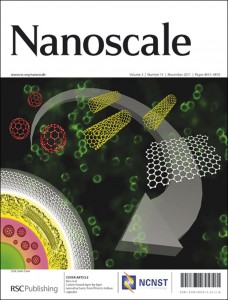
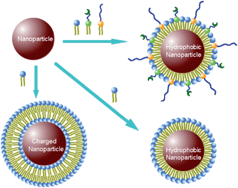

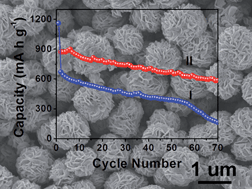
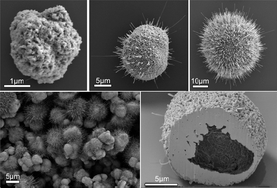
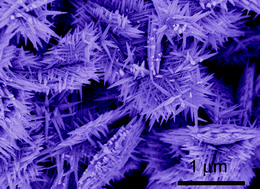 Novel Zn-Sn-O nanocactus films, synthesized by a simple hydrothermal method, display overall power conversion efficiencies (PCEs) of 2.21 per cent when used as the photoanode of dye-sensitised solar cells. After treatment with TiCl4 the PCE rises to 6.62 per cent, comparing favourably with P25 DSSCs (6.97 per cent).
Novel Zn-Sn-O nanocactus films, synthesized by a simple hydrothermal method, display overall power conversion efficiencies (PCEs) of 2.21 per cent when used as the photoanode of dye-sensitised solar cells. After treatment with TiCl4 the PCE rises to 6.62 per cent, comparing favourably with P25 DSSCs (6.97 per cent).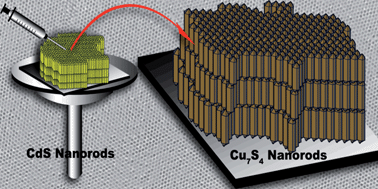
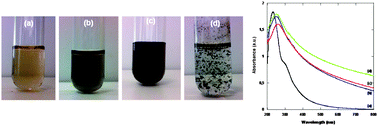
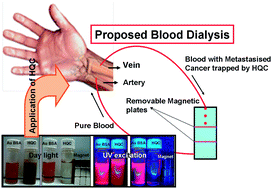 Scientists from India have made blood compatible “hybrid quantum clusters” (HQCs) by combining fluorescent gold clusters with iron-containing superparamagnetic nanoparticles.
Scientists from India have made blood compatible “hybrid quantum clusters” (HQCs) by combining fluorescent gold clusters with iron-containing superparamagnetic nanoparticles.